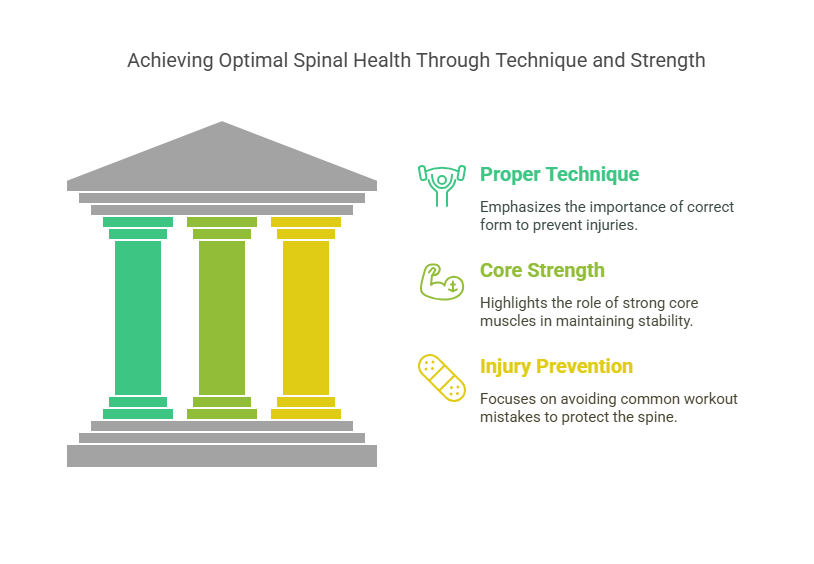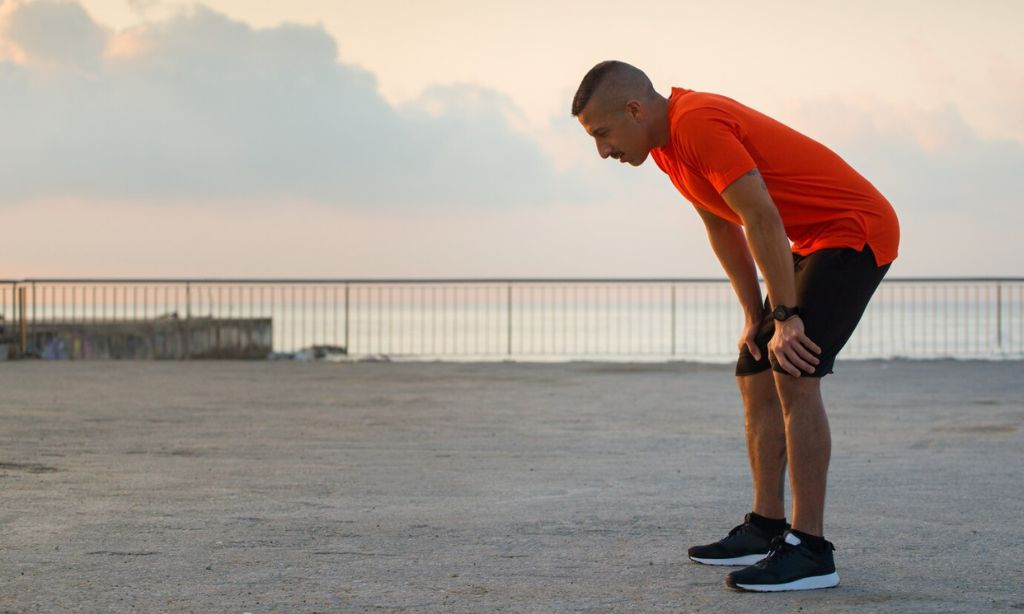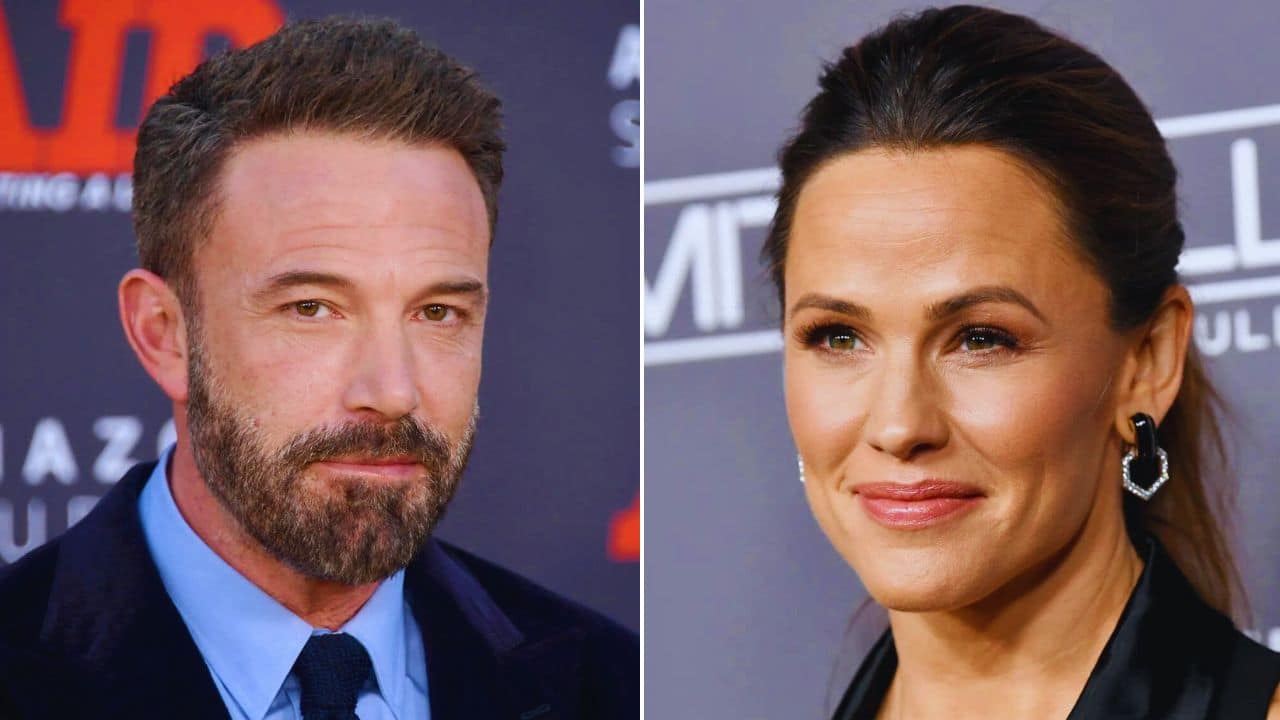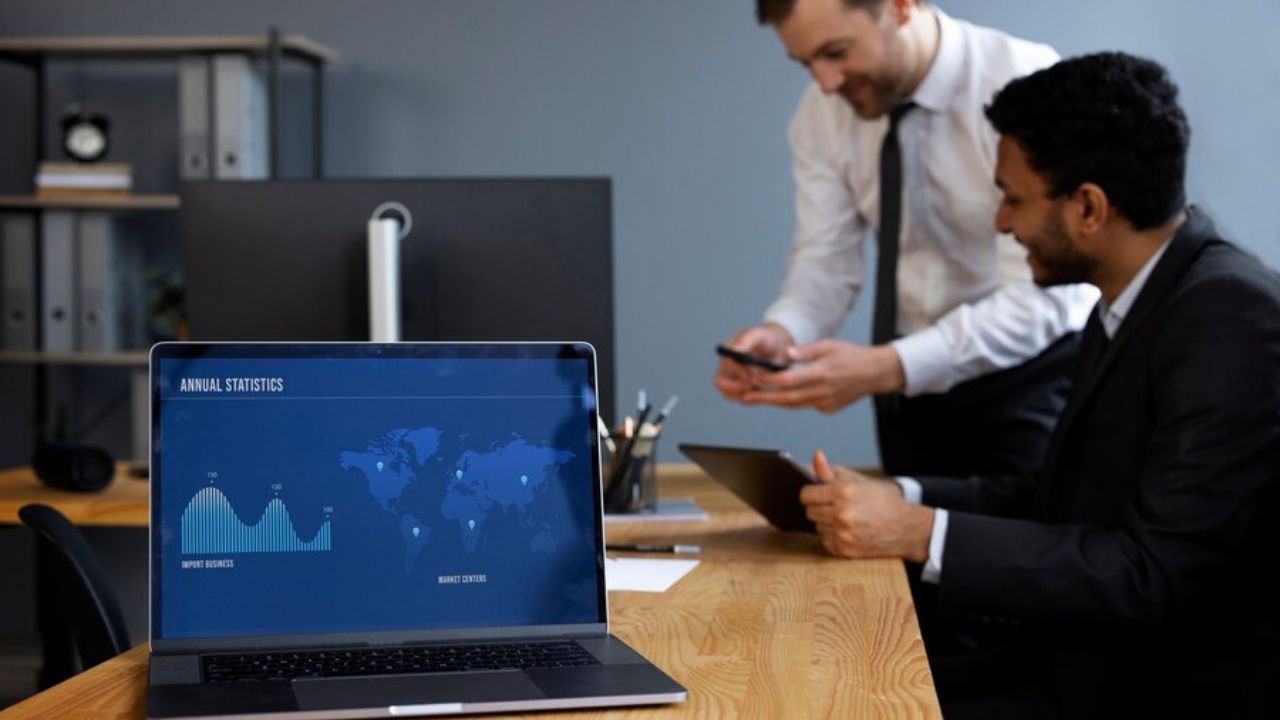Back pain is no stranger to athletes. Whether you’re running, lifting, or twisting on the field, it can strike when you least expect it. A small ache might grow into something worse if ignored.
For active people, this pain can be frustrating and even keep them sidelined.
Did you know up to 40% of athletes deal with low back pain? It’s common in sports like gymnastics, weightlifting, and football. The causes vary—poor posture, overuse injuries, or sudden trauma are just a few.
This guide will show how to prevent back issues before they start. It also shares tips for recovering from nagging aches or serious injuries. Ready to care for your back the right way? Keep reading!
Common Causes of Back Pain in Athletes
Back pain in athletes often stems from simple mistakes or intense movements. Small errors, repeated too often, can lead to major discomfort.
Overuse and repetitive strain
Repeated movements can wear down muscles, ligaments, and joints. Athletes often face overuse injuries from constant training or poor technique. Activities like running or lifting weights stress the lower back.
This strain may lead to muscle strains, herniated discs, or chronic low back pain.
Ignoring rest days worsens the problem. Without proper recovery time, small injuries turn into bigger issues. For example, stress fractures in the spine can develop from repetitive bending motions.
Overtraining weakens core muscles too and increases injury risk further. Proper balance between activity and rest is key for preventing these problems.
Poor posture and technique
Slouching during workouts or using incorrect form puts stress on the spine. This can lead to low back pain or even serious conditions like herniated discs. For athletes, poor posture often stems from weak core muscles or bad movement habits.
Using proper technique is key to injury prevention. Lifting weights with a rounded back can cause muscle strains or ligament sprains. Avoid dropping your hips too low during squats, as it may misalign the spine.
Fixing these habits early makes a big difference in spinal health and athletic performance. A strong core also helps keep your body stable during physical activity.
Inadequate warm-ups or stretching
Skipping warm-ups tightens muscles and weakens ligaments. This raises the risk of back injuries like muscle strains or ligament sprains in athletes. Without proper stretching, your spine lacks flexibility, making it prone to herniated discs or spinal fractures during training.
A quick example—football players often strain their lower backs from sudden movements without warming up. Gentle stretches before physical activity improve blood flow and loosen stiff tissues.
These simple steps help prevent low back pain and boost athletic performance over time.
Sudden impact or trauma
A hard hit or fall during sports can harm the back. Sudden impacts may result in muscle strains, ligament sprains, or even spinal fractures. Athletes in contact sports like football often face such injuries.
A herniated disc might also occur from a strong blow, causing sharp pain or numbness.
Spondylolysis is another common injury from severe trauma. It involves small cracks in the spine that lead to chronic discomfort if untreated. Proper warm-ups and stretching drills lower this risk by preparing muscles for sudden stress during activity.
Rest and targeted therapies play a key role when recovering from these painful injuries.
Prevention Strategies for Back Pain
Taking care of your back starts with smart habits, like building strength, moving better, and staying flexible—discover simple changes that could save you pain.
Proper warm-up and stretching techniques
Good warm-ups and stretching can stop back injuries. Athletes should focus on these steps to stay safe during sports.
- Start with dynamic movements. Exercises like trunk rotations or arm swings get the body ready for action. These increase blood flow and loosen stiff muscles.
- Do cat-cow stretches before workouts. This simple stretch warms up the spine and reduces stiffness, making movements smoother.
- Include core activation moves early on. Planks or bridges prepare the lower back muscles, which help stabilize the spine during activity.
- Stretch your hamstrings often. Tight hamstrings pull on the lower back, causing strain and discomfort over time.
- Avoid skipping warm-ups entirely! Cold muscles are more likely to tear or sprain with sudden movements or heavy lifting.
- Move each joint fully through its range of motion during warm-ups, like shoulder circles or hip rolls, to prevent stiffness later.
- Keep good form while warming up too! Poor posture here builds bad habits that carry into games or workouts.
- Spend at least 10-15 minutes warming up properly before any intense exercise session for best results! This small time investment can save long-term pain.
Core strengthening exercises
Core strengthening exercises are key for keeping an athlete’s back strong and healthy. They help support the spine and reduce stress during sports activities.
- Plank exercises build endurance in core muscles. These include the rectus abdominis and transverse abdominis, which protect the lower back. Start holding a plank for 20 seconds, then work up to 60 seconds.
- Side planks target obliques and improve spinal stability. Stay balanced on one side while keeping your body straight for better posture. Switch sides evenly to prevent muscle imbalance.
- Pelvic tilts strengthen deep core muscles and stretch tight hip flexors. Lie flat on your back with knees bent, then tilt your pelvis slightly upward to engage abdominal muscles.
- Bird dog exercises boost coordination and balance while stabilizing the lower back. Extend one arm forward and the opposite leg backward, keeping your movements controlled and steady.
- Dead bug drills enhance core control by mimicking natural movement patterns. Lie flat, lift both legs to a 90-degree angle, then lower one leg without letting your spine arch off the ground.
- Bridges activate glutes while supporting lumbar health. Lift your hips off the floor until they align with your chest, ensuring proper form throughout each rep.
- Russian twists increase rotational strength crucial for sports like tennis or baseball. Sit upright, lean back slightly, then twist from side to side while holding a light weight or medicine ball.
- Stability ball rollouts improve dynamic movement in intervertebral discs by working all layers of core muscles together.
- Reverse crunches help protect against repetitive strain injuries from heavy lifting or sudden impacts in contact sports like football or wrestling.
- Foam rolling can loosen tight soft tissue around the back after workouts when done safely under guidance from physical therapists or trainers skilled in manual therapy techniques.
Gradual progression in training intensity
Training too hard, too soon, can cause back pain. Increasing intensity gradually helps protect the spine and muscles.
- Build strength step by step to avoid overuse injuries. Jumping into high-intensity workouts too quickly may overload your back.
- Adjust training based on fitness levels. A beginner should not lift the same weight as an experienced athlete.
- Track each session and note progress. Logging workouts can help spot areas where you might be pushing too hard.
- Allow rest days for recovery. Overworking your body without breaks leads to muscle strains or ligament sprains.
- Add core stability exercises like planks regularly. Strong core muscles reduce stress on the lower back during movement.
- Reassess training loads often, especially during growth periods or after a break from physical activity.
- Educate athletes about patience in building strength safely over time, rather than rushing results in sports performance.
- Listen to warning signs like low back pain or stiffness that might signal overtraining or improper form during workouts.
Maintaining correct posture during activities
Good posture is key for avoiding back pain in sports. It keeps your spine aligned and reduces injury risks.
- Keep your back straight while lifting heavy objects. Bending at your hips, not your spine, protects against muscle strain.
- Align your head over your shoulders during activities. Looking down too much can stress the neck and upper back.
- Engage core muscles to support your lower back. Strong core muscles help prevent overuse injuries like muscle strains or ligament sprains.
- Avoid rounding the shoulders during exercises like deadlifts or squats. Bad form increases pressure on spinal discs, risking herniation or bulging discs.
- Place equal weight on both feet when standing for long periods. Uneven weight causes low-back-pain and poor movement patterns over time.
- Take breaks from repetitive movements like swinging a bat or doing gymnastics routines to avoid excessive wear on spinal joints.
- Stretch hip flexors often since tightness there pulls the pelvis forward and misaligns the spine.
Proper posture boosts spinal health and athletic performance while lowering chances of sports injuries!
Recovery Strategies for Athletes with Back Pain
Healing from back pain takes patience and effort. Simple actions, like mindful rest or hands-on care, can make a big difference.
Rest and activity modification
Proper rest and adjusting activities help athletes recover from back pain faster. They also prevent further injuries during the healing phase.
- Limit intense physical activity to reduce strain on the lower back. Avoid heavy lifting, repetitive movements, or exercises that aggravate pain.
- Prioritize quality sleep for faster recovery. A good mattress that supports spinal health can make a big difference.
- Incorporate light movement like walking or mobility drills to keep your body active without stressing the injury.
- Use rest days wisely to let your body heal fully. Overuse injuries often happen when there’s no proper downtime.
- Change exercise routines as needed with the help of physical therapists or coaches who understand back care.
- Practice gentle stretching exercises such as pelvic tilts to improve flexibility without overloading muscles.
- Reduce sitting for long periods by standing up and stretching every 30 minutes to maintain healthy movement patterns.
- Adjust training loads based on recovery progress to avoid chronic conditions like herniated discs or muscle strains.
- Pay attention to any nerve compression or sharp pain during modifications; stop immediately if symptoms worsen.
- Combine rest with heat therapy or cold packs for targeted pain relief and reduced inflammation in strained areas.
Physical therapy and rehabilitation exercises
Physical therapy plays a big role in helping athletes recover from back pain. It restores movement, strengthens muscles, and reduces pain.
- Stretching is key for recovery. Athletes need to focus on safe stretches for their lower back, hips, and hamstrings. This improves flexibility and relieves tension.
- Core strengthening helps support the spine. Exercises like planks or pelvic tilts build strong muscles to protect the back during activity.
- Physical therapists often use heat therapy with exercises to ease low back pain quickly. A study shows this combo can help reduce discomfort in acute cases.
- Controlled movement patterns are essential after injuries like lumbar strains. These exercises aim to regain full range of motion before returning to sports.
- Manual therapy techniques, such as massage therapy or spinal manipulation, may be used by professionals for extra relief and improved mobility.
- Specific rehab plans are designed to prevent overuse injuries and address issues like herniated discs or muscle strain recovery.
- Active recovery focuses on light physical activity instead of complete rest, keeping blood flow steady for faster healing.
Physical therapy works best when paired with commitment and patience from the athlete!
The role of chiropractic care and manual therapy
Chiropractic care can reduce back pain quickly. Spinal manipulation therapy provides short-term relief by improving joint function. Many athletes use this to manage muscle strains or herniated discs.
Adjustments also ease nerve compression and restore range of motion.
Manual therapy like massage boosts recovery by relaxing tight muscles. It improves blood flow, which helps repair tissue damage. Therapies such as the McKenzie method focus on fixing low back pain symptoms step-by-step.
Regular sessions help prevent future injuries too.
Use of heat, cold, or other therapeutic modalities
Cold packs, towels, or ice massage work well for muscle strains. They numb the area and cut down swelling fast. For acute low back pain, cold can ease disability and reduce sharp aches.
Heat works best on tight muscles or subacute pains. Warm baths, hot water bottles, or saunas loosen stiff lower backs and boost blood flow. Low-Level Laser Therapy (LLLT) mixed with NSAIDs helps manage acute pain too.
Some athletes also use ultrasound therapy to target sciatica-related issues effectively.
When to Seek Professional Help
If the pain keeps you up at night or limits your movement, don’t wait. A trained specialist can help pinpoint the issue and guide recovery efforts.
Identifying signs of severe or chronic back pain
Numbness, tingling, or sharp pain in the back can signal serious problems. Sudden changes in reflexes or muscle strength should not be ignored. Incontinence, fever, chills, or severe discomfort after a sports injury could point to deeper issues like nerve compression or spinal fractures.
Long-lasting pain that doesn’t improve with rest may mean chronic conditions like herniated discs or spinal stenosis. Athletes experiencing these symptoms need professional care right away.
Ignoring them could worsen the problem and delay recovery.
Consulting a sports medicine specialist
A sports medicine specialist can pinpoint the exact cause of back pain in athletes. They assess conditions like muscle strains, herniated discs, or nerve issues. Their evaluation helps avoid lasting damage and speeds up recovery.
Specialists also design treatment options such as spinal manipulation or exercise therapy to improve movement patterns.
These experts guide safe return-to-play plans based on individual needs. They suggest exercises to strengthen core muscles and avoid future injuries. Warm-up routines and posture tips from them reduce overuse problems during training or games.
This care keeps athletes strong and active without risking new injuries.
Long-Term Tips for Maintaining Back Health
Small changes can make a big difference to your back. Focus on habits that keep your spine happy and strong for years to come!
Incorporating mobility and flexibility exercises
Improving mobility and flexibility helps reduce back pain in athletes. These exercises also boost movement patterns and prevent injuries.
- Stretch your hip flexors often. Tight hip flexors can pull on your lower back, causing pain over time. Try lunges or pelvic tilts daily for relief.
- Incorporate hamstring stretches into your routine. Stiff hamstrings may limit how your hips move, putting stress on the spine. Hold a simple forward bend stretch for 15-20 seconds per leg.
- Use movement preparation exercises before workouts. Dynamic moves like leg swings or cat-cow pose get your body ready for action and loosen stiff muscles.
- Practice yoga regularly for spinal health. Poses like child’s pose or downward dog improve flexibility in the lower back and shoulders.
- Focus on stretching after intense training sessions. Gentle movements, such as cobra stretches, can ease tense muscles while improving range of motion.
- Perform foam rolling exercises weekly to target sore or tight areas around the spine and hips.
- Engage in low-impact activities like swimming that improve flexibility without straining joints or muscles.
- Include core strength in your program too! Strong core muscles support better posture and reduce risks of back injury during physical activity.
- Pay attention to spinal alignment during every stretch to avoid further strain or injury from improper angles.
- Maintain consistency with these habits over time for long-term improvements in recovery, performance, and overall athletic care!
Balancing training loads with recovery time
Athletes push their limits to perform better. Balancing hard training with proper recovery is key to avoiding back pain and staying strong.
- Plan rest days into your schedule. Rest gives muscles time to heal and grow stronger, lowering the risk of injuries like muscle strain or low back pain.
- Limit heavy lifting sessions in one week. Too much stress can lead to issues like herniated discs or nerve compression over time.
- Alternate intense workouts with lighter ones. Intense movement patterns need recovery, while light activities improve blood flow for faster healing.
- Watch for warning signs of overuse injuries. Soreness lasting longer than two days might mean it’s time to ease up and allow active recovery.
- Stretch hip flexors and core muscles after workouts. Tightness here often causes improper lifting techniques, leading to spinal health problems.
- Use mobility drills regularly between exercises. These help maintain range of motion, preventing ligament sprains or repetitive movements damage.
- Track sleep quality alongside training routines. Poor sleep makes it harder for the body to repair stress fractures or reduce inflammation from activity.
- Review training loads with physical therapists if unsure about limits. They can suggest better adjustments without harming athletic performance long-term.
- Avoid skipping meals post-workout; good nutrition supports recovery zones in both muscle and bone tissues that experience micro-tears during exercise sessions!
Regularly reviewing and improving technique
Athletes face back pain due to poor technique. Fixing how you move can lower risks and boost performance.
- Check your form often during training. Small mistakes in posture or movement add up over time.
- Use mirrors or record yourself to spot issues. Seeing your movements helps catch bad habits fast.
- Get feedback from coaches or physical therapists. Experts can suggest better ways to move safely and effectively.
- Practice drills that focus on proper alignment and balance, such as pelvic tilts or mobility drills for the spine.
- Avoid repetitive movements with poor form, which can lead to overuse injuries like muscle strains or ligament sprains.
- Gradually increase weights when lifting instead of rushing progress, preventing stress on the spine and discs like herniated lumbar discs.
- Stretch tight areas regularly, especially hip flexors, which can affect back alignment during physical activity.
- Rest between intense training days to let muscles recover, reducing strain on your lower back over time.
- Include core exercises like planks in workouts for stronger support against nerve compression while moving.
- Adjust techniques using data from sports medicine specialists if struggling with consistent low back pain.
Each small improvement makes a big difference in spinal health and athletic performance!
Takeaways
Back pain can be a big problem for athletes, but it’s not unbeatable. Prevention and recovery steps make a huge difference in staying strong and healthy.
Dr. Laura Bennett, with 20 years of sports medicine experience, shares her insights here. She holds a PhD in Sports Rehabilitation from Stanford University and has treated top athletes globally.
Her research focuses on athletic injuries and spinal health, making her advice reliable.
Dr. Bennett emphasizes the need for balance in training routines to avoid overuse injuries like muscle strains or ligament sprains. She underscores the role of core muscles in supporting the spine during physical activity.
Stretching before workouts helps keep muscles flexible; skipping this step raises risks.
She also discusses safety in treatments like chiropractic care or manual therapy used by athletes for relief. Approved therapies backed by studies work better long-term than quick fixes that lack transparency.
For everyday use, she suggests incorporating mobility drills into warm-ups or cool-downs to ease tension around back muscles. Alternating heavy lifting sessions with rest days protects against nerve compression or slipped discs caused by strain.
FAQs on Back Pain In Athletes
1. What causes back pain in athletes?
Back pain in athletes can result from overuse injuries, muscle strains, ligament sprains, or repetitive movements like heavy lifting. Conditions such as herniated discs or nerve compression may also contribute.
2. How can athletes prevent lower back pain?
Athletes can prevent low back pain by focusing on strength training for core muscles, practicing proper movement patterns, and including mobility drills and pelvic tilts in their routines. Rest days are also key to avoiding overuse injuries.
3. What are common recovery strategies for back pain?
Recovery strategies include physical therapy, massage therapy, chiropractic care, and active recovery exercises that improve range of motion. Alternative treatments like acupressure or prolotherapy may help relieve pain too.
4. Can spinal health affect athletic performance?
Yes! Poor spinal health caused by issues like slipped discs or stress fractures can limit mobility and reduce overall athletic performance while increasing the risk of further injury.
5. When should an athlete see a physical therapist for back pain?
An athlete should consult a physical therapist if they experience persistent low back pain from activities involving repetitive movements or if symptoms worsen despite rest and basic treatment options.













































